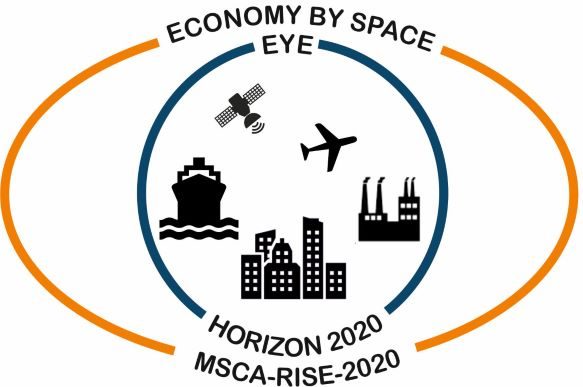About the project Economy bY spacE (EYE)
This project is co-funded by the European Union’s Horizon 2020 – Marie Skłodowska Curie – Rise 2020 under Grant Agreement: 10100763.
The current project is part of an EU Horizon 2020 Marie Skłodowska-Curie action, Research and Innovation Staff Exchange (RISE). RISE supports the short-term mobility of research and innovation staff at all career levels, from the most junior (post-graduate) to the most senior (management), including administrative and technical staff. It is open to partnerships of universities, research institutions, and non-academic organizations both within and beyond Europe. RISE is meant to promote international and inter-sectoral collaboration through research and innovation staff exchanges.
Space technology connected with Artificial Intelligence and machine learning techniques is one of the most rapidly developing field of science and also play a key role to control disaster by space like Covid-19 outbreak. While space technologies have been successfully applied to a small number of macroeconomy and heath care related matters over the last decade, there is neither a significant utilization of space elements nor a systematic analysis of needs for space assets in this sector yet. There are a significant number of indirect parameters observable from space that can be correlated to the impact on the economy of natural, health (including epidemic) and man-made disasters. Classical environment parameters (geographical, climatological and hydrogeological) and man induced impact on the environment (pollution, heat) can be combined with economic parameters of human
activities impacted by the epidemic including transportation, industry, and commerce. Specific human activities can be directly correlated with the progression of the diseases i.e. increase of heat delivered by crematorium in the affected areas as well as in the dwelling areas due to lock-down restrictions. All these “observed parameters” need to be correlated to macro parameters related to the progress of the epidemic and its impact of the of the infection to the economy at different scales. At medium- and long-term time scale, this methodology enables the near real-time monitoring of macroeconomic parameters during the recovery phase following the end of the emergency outbreak.
The project EYE intends to propose a prototype service based on Copernicus data, automatic image processing supported by artificial intelligence integrated with modelling and statistic and geospatial data into an IT platform able to provide econometric and epidemiologic nowcasting and forecasting data.
